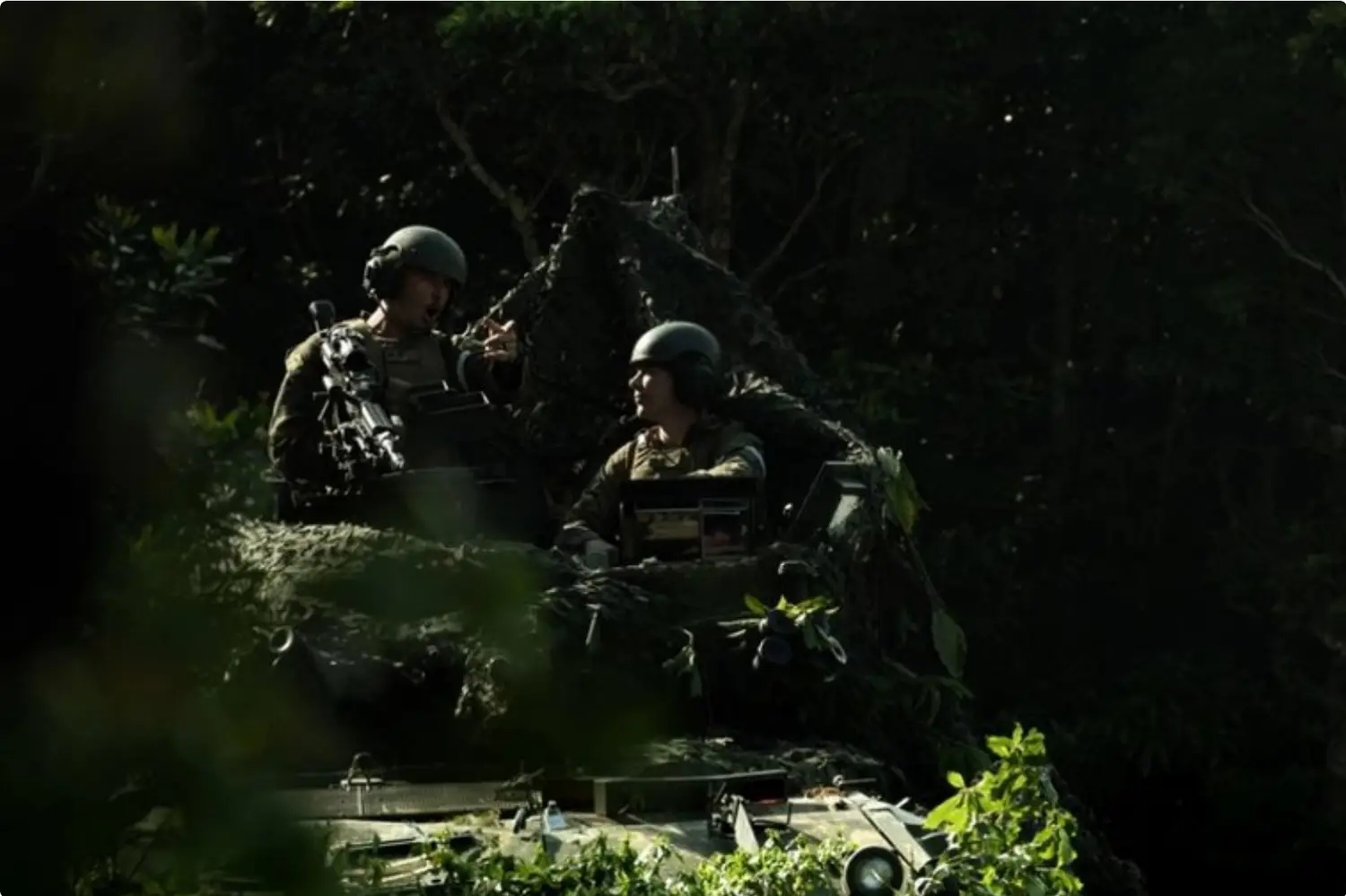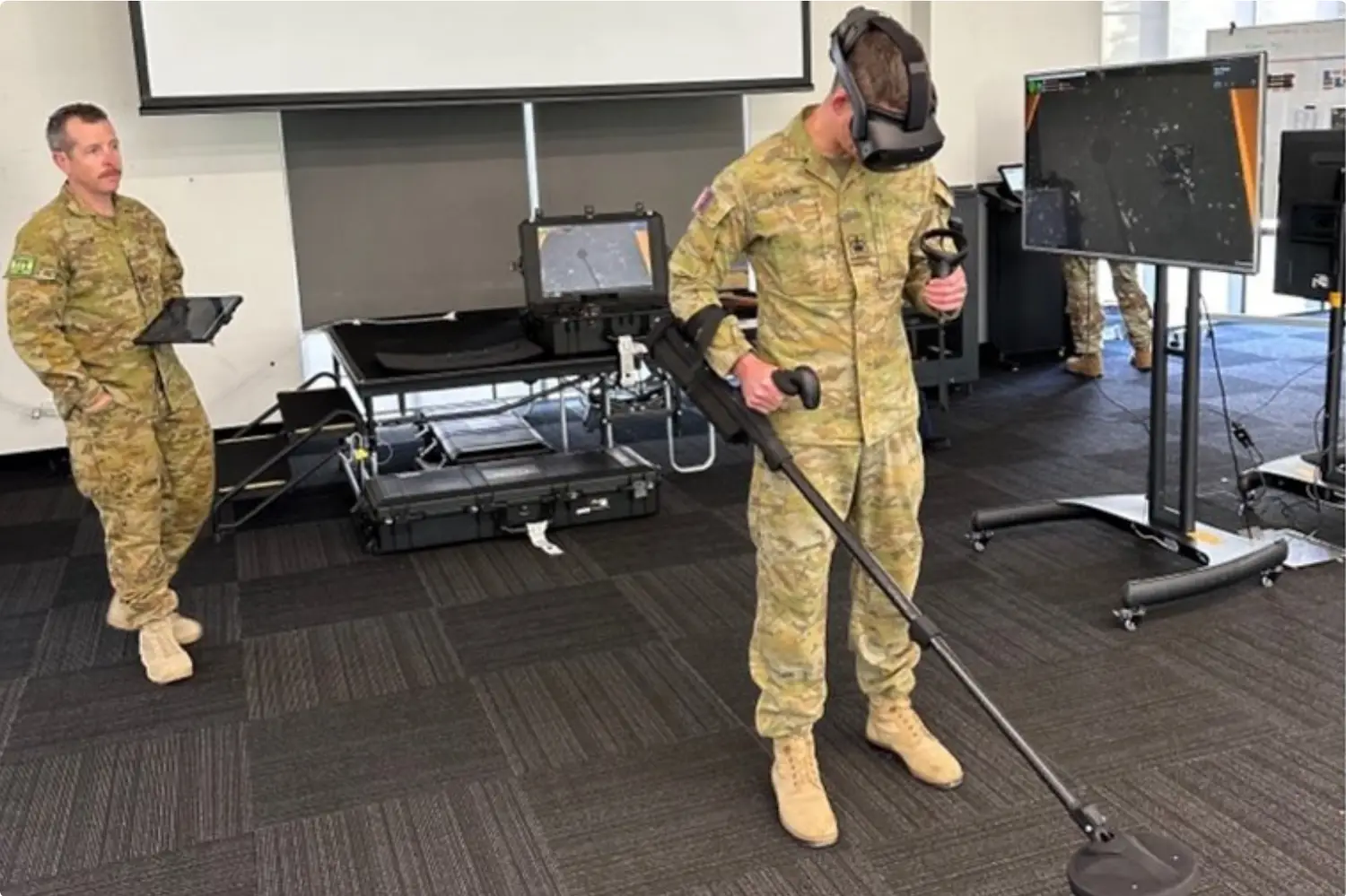
Report home > News
June 2024 | technology report | Military Training
by Flavia Camargos Pereira
The collaboration can improve training on specific types of warfare and help SOF access unique capabilities.
Above: US Marines in a simulated mission during Jungle Warfare Exercise 23 in Japan. (Photo: USMC)
The US military plans to strengthen partnerships with its allies to enhance the readiness for US SOF teams. During the SOF Week 2024 exhibition, defence authorities stated that close collaboration can improve training for special operators and enable access to unique capabilities.
The approach includes conducting additional joint deployments and exercises in other countries to improve the doctrine for operation in specific scenarios such as jungles and mountains.
This line of action is also intended to allow for identifying solutions, systems and technologies that can be deployed in those challenging, complex environments.
RELATED ARTICLES
US to increase investment in deterrence in the Indo-Pacific theatre
USMC adapts to new strategic realities caused by Chinese actions and ambitions
US Air Force fires warning as China attempts to recruit US airmen
US Special Operations Command seeks $1.3 billion investment in intelligence
The Commander of the US Special Operations Command South, Maj Gen Peter Huntley, stressed during a panel on 7 May that 'you are dealing with world-class' SOF partners, particularly in Central and South America.
Some of those countries have facilities and training units to prepare for special types of warfare. Brazil, for instance, has the Jungle Warfare Instruction Centre (CIGS in Portuguese) located in the State of Amazonas.
Established in 1964, CIGS has a 1,150 km2 instruction field area in the Amazon rainforest and prepared thousands of Brazilian and foreign jungle warriors.
Since 2017, the centre offers the Jungle Operations International Course (JOIC) for military personnel from friend countries. The six weeks of training covers techniques to survive and operate in the Amazon region.
Colombia, meanwhile, has training centres located in mountain areas to prepare special operators. Some of those courses are conducted in the Páramo de Sumapaz, which stands 4.5 km above sea level.
Huntley pointed out that Columbia is going through a 'pretty significant growth' in its naval assault capacities and capabilities and having maritime SOF partners 'is hugely valuable'.
'I am telling you right now: they are as good as anybody, if not better than most of us,' Huntley claimed. 'It is an opportunity to build capability, it is an opportunity to build readiness.'
The US Southern Command has been seeking ways to increase the integration between DoD’s inventory and systems operated by partners and allies.
In the Indo-Pacific, aligned with the 2022 National Defence Strategy, the US has been conducting several joint training campaigning activities with partners. It includes exercises in jungle scenarios.
The Fleet Master Chief, David Isom, Senior Enlisted Leader of the US Indo-Pacific Command, pointed out that the service is interested in identifying the most effective systems and technologies for deployment in this theatre.
'Sometimes it is not a US solution. Sometimes it is an Australian or Philippine solution,' Isom pointed out.
The US Special Operations Command (USSOCOM) is also seeking artificial intelligence and advanced analytics solutions to support dynamic and emergent operational requirements in the Indo-Pacific.
Next article below > Australian Army acquires immersive countermine training solution
JUNE 2024 | technology report | Military Training
by Flavia Camargos Pereira
FLAIM Systems announced the award of a $1.32 million contract for the supply of multiple FLAIM Sweepers at the SOF Week 2024 exhibition.
Above: FLAIM Sweeper uses virtual reality to replicate mine and explosive hazards. (Photo: FLAIM Systems)
The Australian supplier of training solutions, FLAIM Systems, announced at the SOF Week 2024 exhibition in Tampa, Florida, that it was awarded a $1.32 million contract from the Australian Army to further develop its Sweeper, a fully immersive countermine and explosive hazard awareness training system.
The agreement covers the purchase of multiple FLAIM Sweepers to conduct an extended trial and user evaluation across the service’s School of Military Engineering and its Combat Engineer and Special Operations Engineer Regiments.
The deal also comprises additional developments to enhance the capacity of the software and add more scenarios and targets to the system.
RELATED ARTICLES
I/ITSEC 2023: How VR and AR are reshaping the training capabilities for the Pentagon
Anduril Industries launches 'Pulsar' EW systems at SOF Week
Teledyne FLIR introduces Rogue 1 recoverable loitering munition system
Cubic unveils new single-case solution to enable data-rich processing in complex environments
This solution uses virtual reality (VR) to simulate mine and explosive hazards as well as diverse deployment scenarios without exposing personnel to dangerous environments.
Speaking to Shephard, Bill Sowry, FLAIM’s director of customer relations, claimed it can replicate 'any target, any device pretty much anywhere in the world' covering the 'full spectrum of all sorts of hazards'.
It includes landmines, anti-personnel mines, vehicle mines, IEDs and explosive ordnance like mortars and artillery shells.
'In the virtual world, they [operators of demining equipment] can clear a street in the Donbas in Ukraine or a beach in the Solomon Islands with mines or explosive ordnance left from World War Two,' Sowry highlighted.
'It can replicate contemporary combat operations and humanitarian demining operations to remove landmines in areas that have previously been a battlefield.'
FLAIM Sweeper allows for land mine detection and clearance training for combat engineers and explosive ordnance operators, in addition to awareness training for all deploying personnel and even civilian people who might live in mined areas.
'You are literally saving time and money for every activity that you are doing because there is no paperwork, no transport, no ration,' Sowry noted. 'It is a fully deployable solution and takes 10 minutes to be set up.'
The system is intended to help build procedural muscle memory and tactical proficiency while facilitating the delivery of an after-action review following each training session.
'It provides immediate visual feedback of what you did, what you did wrong. So, it is a far more comprehensive training outcome,' Sowry said.
FLAIM also provides tailored options for the Sweeper in order to replicate specific systems operated by its customers.
VR training solutions for firefighters are other products in the company’s portfolio. Currently, FLAIM System has 400 customers in 46 countries, including the US Air Force and US Marine Corps.

